
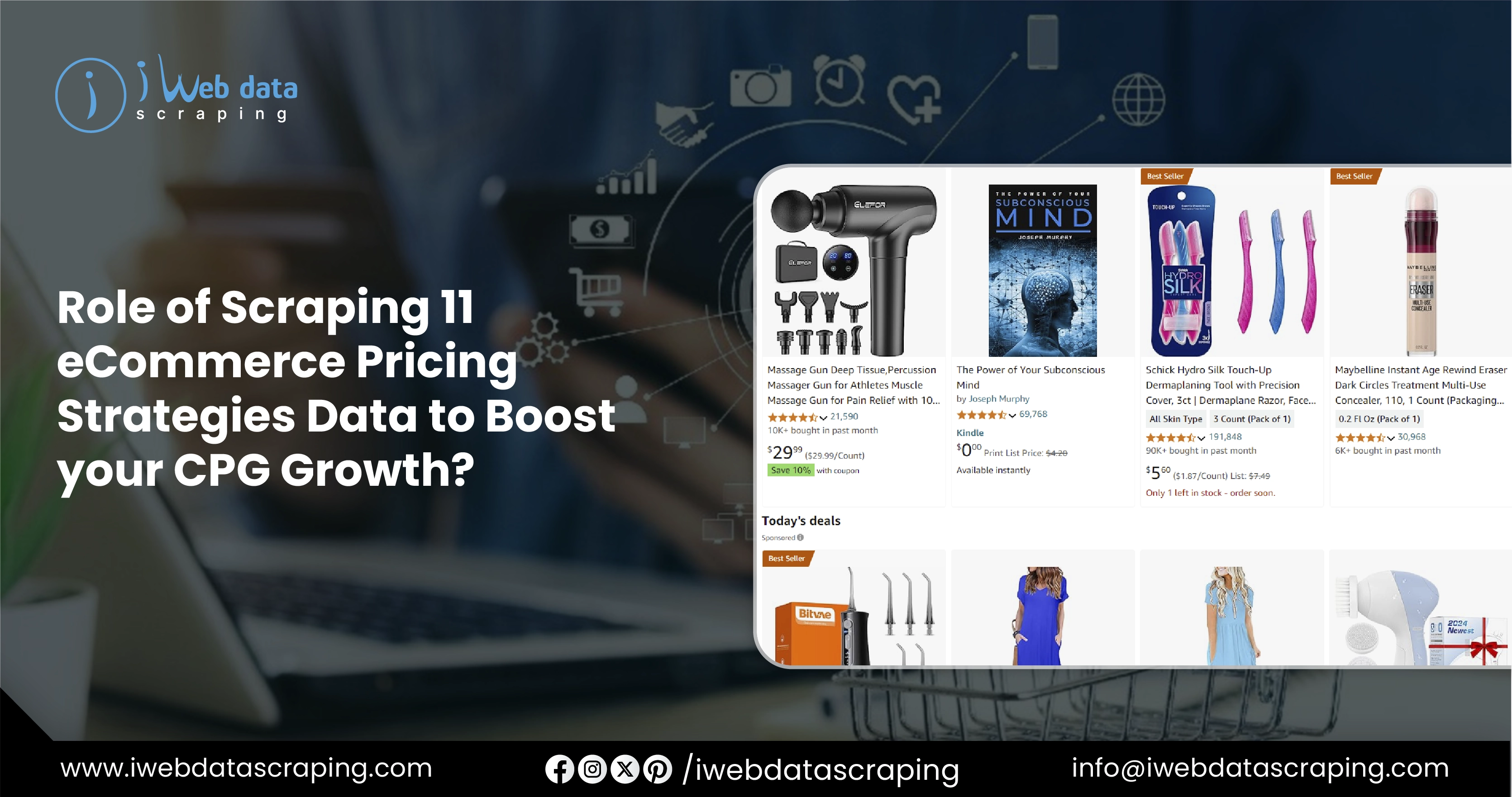
Digital consumer packaged goods (CPG) sales are projected to surpass 10% of the total US CPG market in 2022, marking an impressive growth of approximately 100% compared to 2019. As online competition intensifies, retailers and brands must elevate their digital strategies to stay competitive. Today's savvy consumers are constantly researching products and comparing prices across multiple platforms, making the CPG market more challenging than ever. To remain competitive, retailers need to adopt advanced pricing strategies that attract shoppers and turn them into loyal customers.
A critical approach is leveraging ecommerce pricing strategies through data analytics. Major retailers like Amazon and Walmart excel in this area, using technology and data to offer the most attractive prices and capture a larger market share. Leverage scraping 11 eCommerce pricing strategy data to boost your CPG growth and gain valuable insights into competitor pricing, market trends, and consumer behavior. It will allow us to adjust pricing strategies effectively.
Effective pricing is not a one-size-fits-all solution. Retailers must develop pricing strategies that align with their unique business needs and objectives. Factors such as cost of production, competitor prices, consumer trends, revenue goals, and other business costs play a crucial role in a successful pricing strategy. Furthermore, pricing decisions should not be static; they require regular analysis and iteration to ensure they remain optimal and enhance business performance.
In summary, eCommerce pricing strategies are essential for boosting CPG growth. By continuously monitoring and analyzing competitor pricing and market dynamics, retailers can refine their strategies, improve pricing accuracy, and drive sales and customer loyalty.
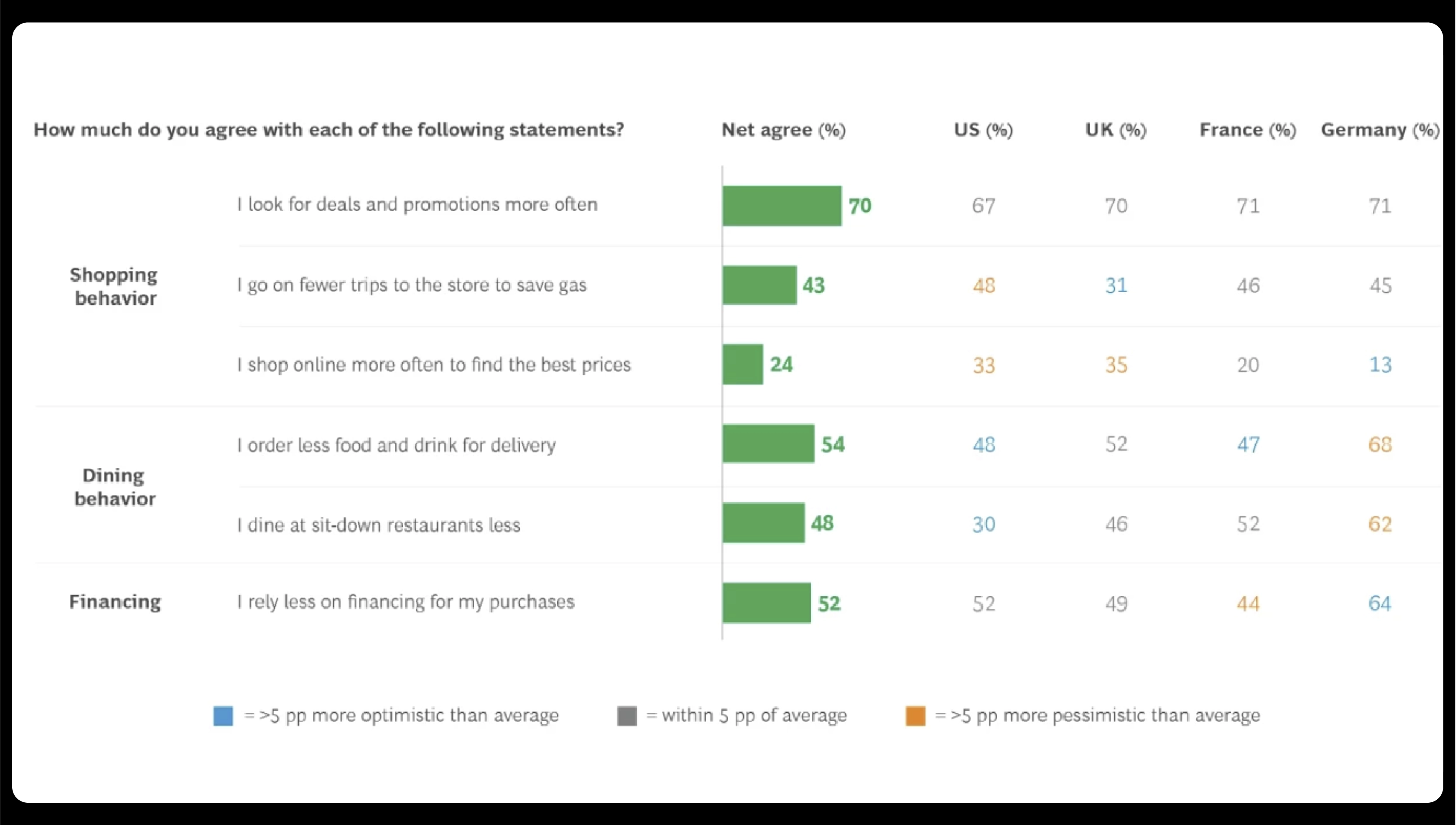
Developing a robust pricing approach is the first step in mastering CPG pricing strategies. This initial phase can be challenging, as getting the pricing right on the first attempt is often elusive. Achieving the optimal price usually involves trial, testing, and adjustments before finding the ideal balance. To refine this process, retailers and brands must leverage comprehensive analytics, historical data, competitive intelligence, consumer demand trends, and broader market insights. This data-driven approach helps pinpoint the most effective pricing strategy.
The second crucial aspect is monitoring competitors and adapting your pricing strategy accordingly. In today's dynamic market, simply setting a price and forgetting it is no longer feasible. Constant vigilance is required as online conditions fluctuate rapidly. Retailers must integrate advanced AI tools that continuously review and adjust pricing strategies to stay competitive. These tools enable businesses to operate efficiently by automating pricing adjustments based on real-time data, freeing up resources to focus on other growth areas.
Scrape eCommerce pricing strategies for CPG growth to help companies enhance their pricing tactics. Scraping valuable data from various eCommerce platforms provides insights into competitor pricing and market trends, allowing for more informed and agile pricing decisions. This approach ensures that pricing remains competitive and supports overall business growth by effectively adapting to changing market conditions.
Listed below are the top 11 e-commerce pricing strategies that are pivotal in boosting the CPG growth of retailers.
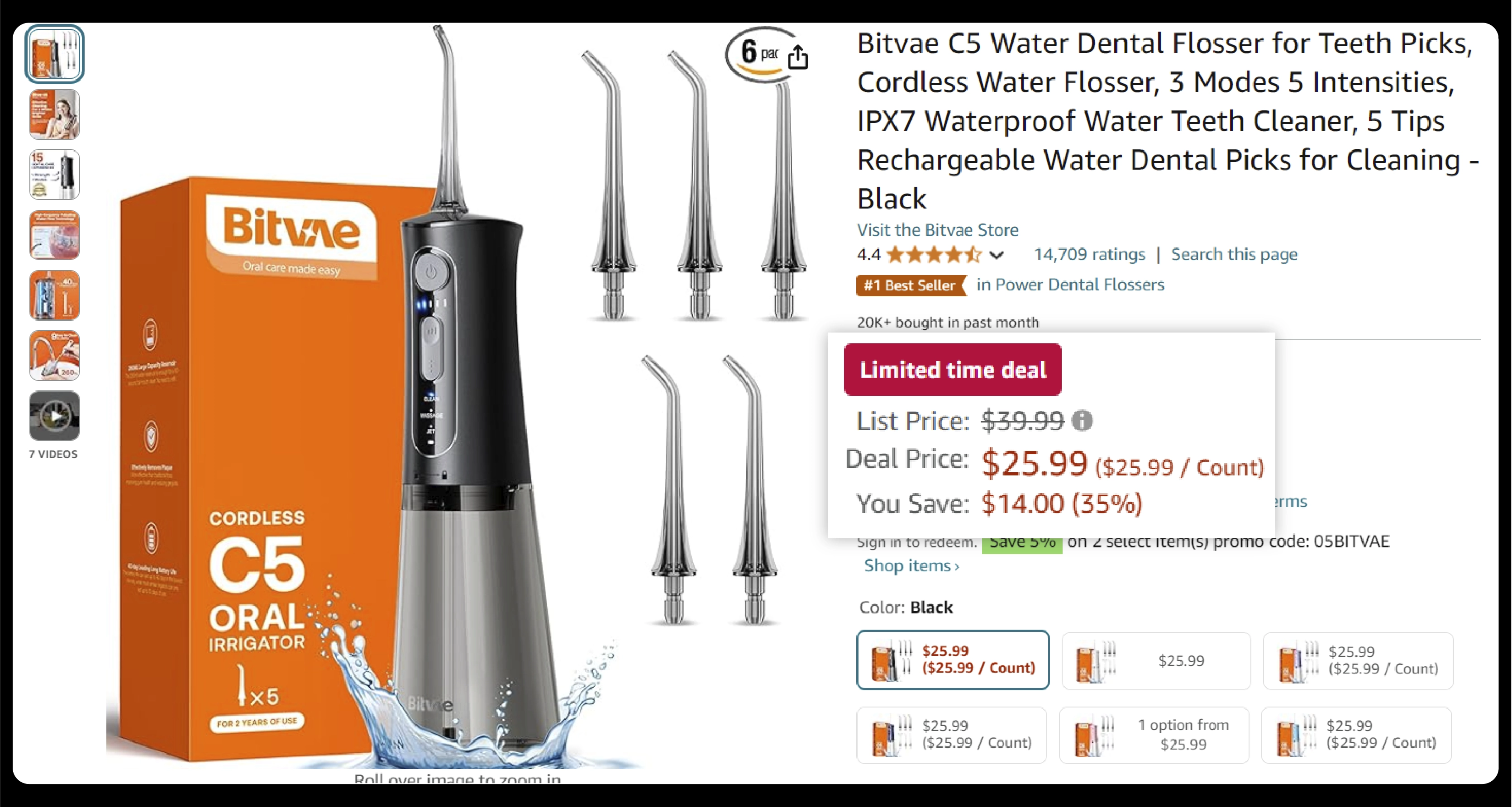
Penetration pricing is a strategy where businesses offer a new product or service at a significantly reduced price, often below cost, to attract customers. This approach is used to quickly gain market share, especially when launching a product in a competitive market or entering a new market segment. The goal is to draw customers in with an appealing price and build brand loyalty, which can lead to increased customer retention and higher spending in the future.
The expectation with penetration pricing while web scraping retail and CPG industry data is that long-term gains will offset the initial loss incurred from steep discounts. Businesses aim to foster brand loyalty and encourage repeat purchases by attracting a large, low-priced customer base. Over time, as customers become more familiar with and invested in the brand, businesses can gradually raise prices to improve profitability.
It is particularly effective in highly competitive markets where more than product differentiation is needed for consumer attention. To optimize this strategy, businesses can leverage eCommerce data scraper. This data helps understand competitor pricing, market trends, and consumer preferences, allowing for more strategic pricing decisions and successful market entry.
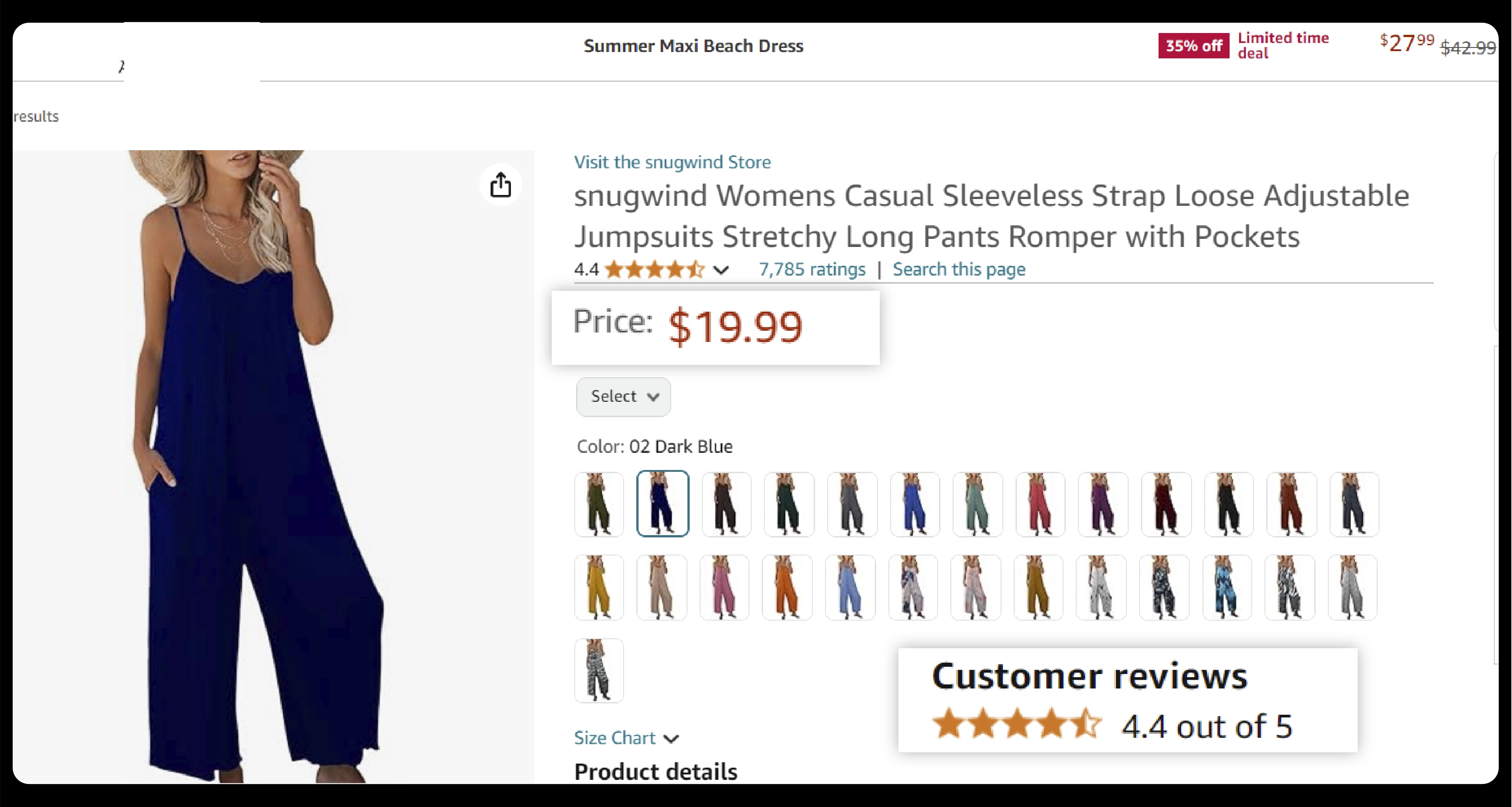
Keystone pricing is a straightforward pricing strategy where retailers set the selling price of a product by simply doubling its wholesale cost. This method provides a quick and easy way to establish retail prices, eliminating the guesswork in pricing decisions. However, while keystone pricing simplifies pricing, it can limit flexibility for long-term strategic planning. This approach may not be ideal for products with slow turnover or high additional costs, such as shipping, warehousing, and marketing, as it may not yield the desired profitability and could result in missed revenue opportunities.
Keystone pricing is particularly unsuitable for unique, high-demand products with significant potential to command higher prices and achieve greater margins. In such cases, the fixed nature of keystone pricing may cap potential profits that could be realized through more dynamic pricing strategies.
Businesses should extract e-commerce product pricing strategies using advanced tools to optimize pricing and avoid potential pitfalls. Employing an eCommerce data scraping service can provide valuable insights into competitor pricing, market conditions, and consumer behavior. This data enables retailers to make more informed pricing decisions and adapt their strategies to maximize profitability and market competitiveness.
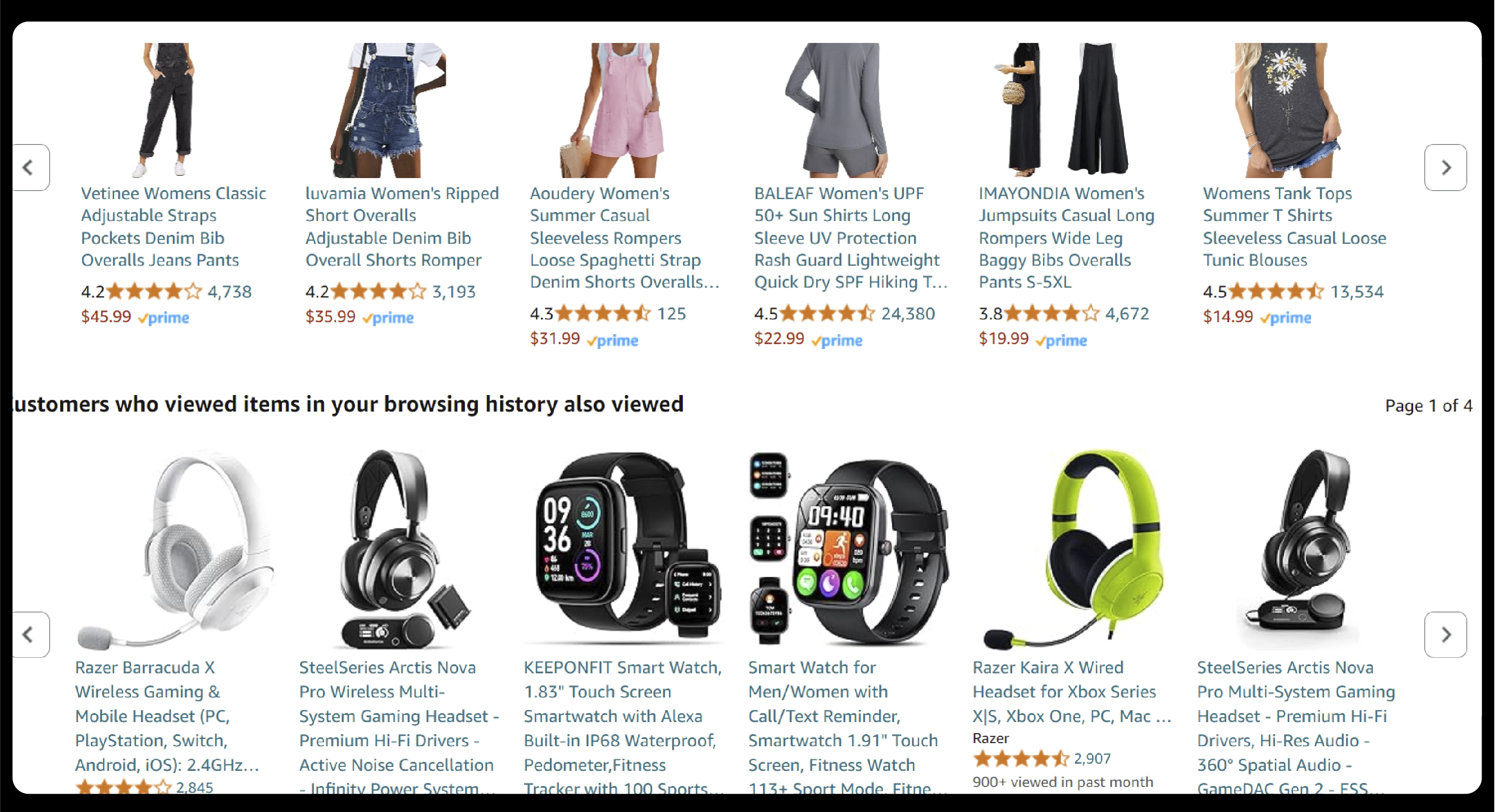
List pricing, also known as Manufacturer Suggested Retail Price (MSRP), is a pricing strategy where products are sold at the price the manufacturer recommends. This price point, often called the 'full price' or catalog price, does not account for discounts or promotional offers. List pricing provides a standardized price across the board, reflecting the brand's suggested retail value. While this approach maintains consistency with the manufacturer's pricing recommendations, it may not offer a competitive edge in today's dynamic market.
List pricing can be effective in an ideal market with highly standardized products, such as electronics or consumer packaged goods. However, the current eCommerce landscape, driven by discounts, competitive pricing, and savvy shoppers, makes it less effective. Consumers have access to multiple data points and comparative tools, so they often look for the best deals and lowest prices.
To remain competitive, businesses should consider using an eCommerce price monitoring tool. This tool can help track competitor pricing, market trends, and promotional activities, allowing retailers to adjust their strategies and better align with market conditions. By leveraging such tools, businesses can enhance their pricing strategy, attract customers, and improve their overall market position.
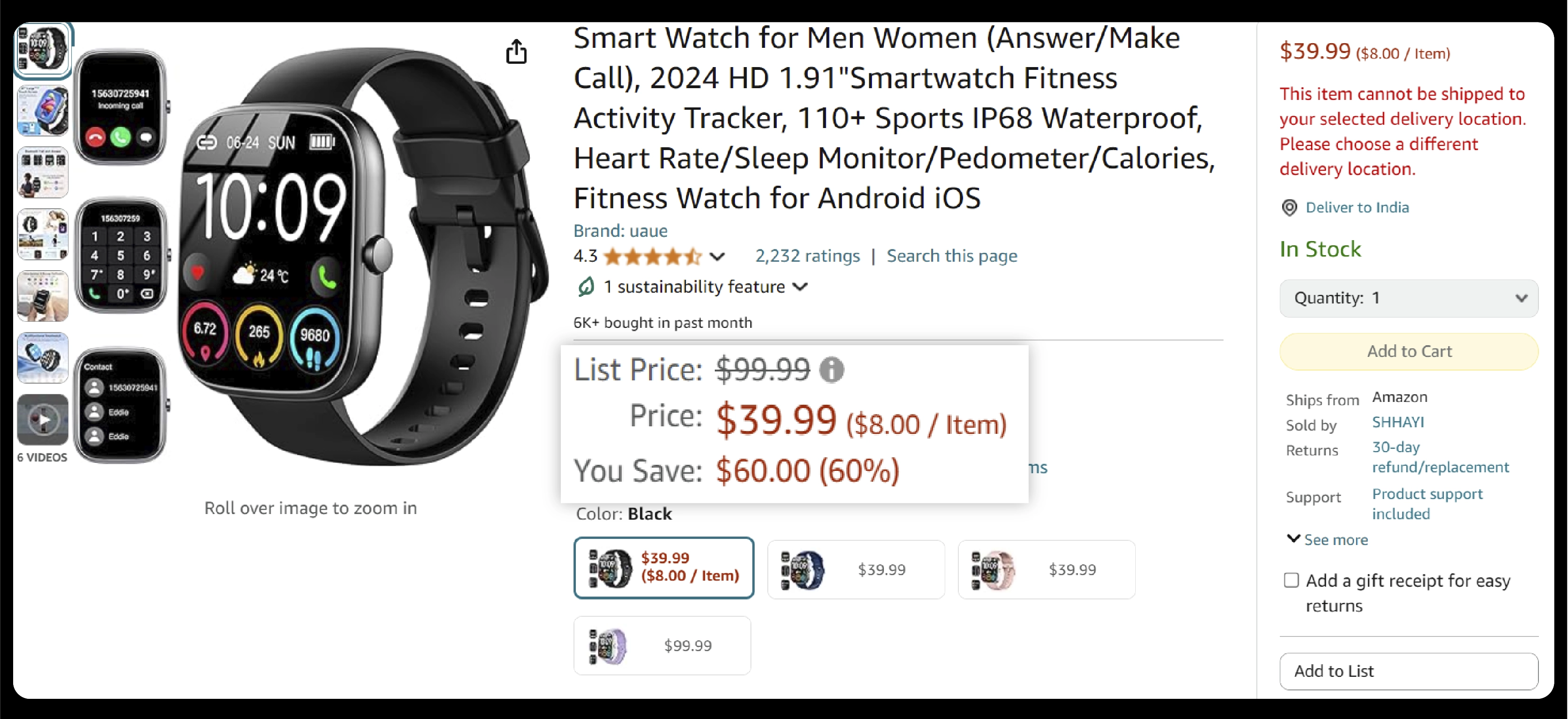
Psychological pricing leverages consumer psychology to make prices seem more appealing by setting them below round numbers. Instead of pricing a product at a whole dollar amount, businesses often end prices with digits like 5 or 9, such as $9.99 instead of $10.00. This strategy exploits the tendency of consumers to perceive prices just under a round number as significantly lower, thus making the product appear more attractive and increasing sales volume. By tapping into this psychological effect, retailers can enhance their pricing appeal and boost conversion rates.
This approach can be utilized independently or combined with other pricing strategies to engage consumers further. For instance, psychological pricing can complement strategies like discounts or value-based pricing to create a more compelling offer.
Businesses can use an eCommerce price data scraper to implement psychological pricing and understand its impact effectively. This tool helps gather and analyze competitor pricing, market trends, and consumer behavior, providing insights into how psychological pricing influences sales and allowing for more strategic pricing adjustments. By leveraging these insights, retailers can optimize pricing strategies to attract customers and improve sales performance.
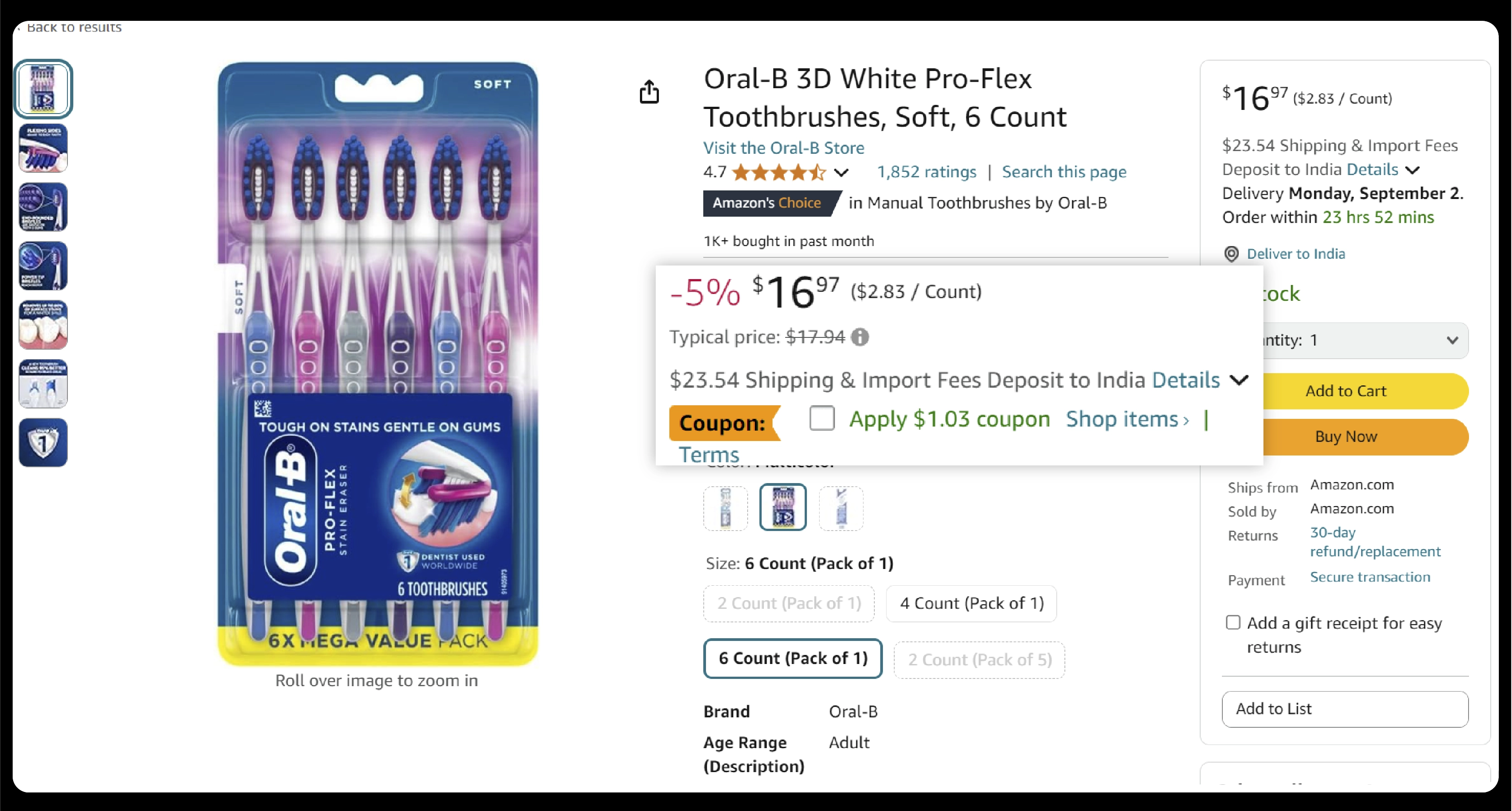
Loss leader pricing is a strategy where a retailer offers a trendy item at a significantly reduced price, often below cost, to attract customers into the store or onto the website. The primary goal is to entice shoppers with the initial low-priced product, with the expectation that they will make additional purchases to offset the perceived savings on the initial item. This approach is efficient for retailers and brands with a broad product range and ample inventory, as it helps draw attention and drive sales volume.
By leveraging loss leader pricing, businesses can increase foot traffic or online visits and boost overall sales. The initial product acts as a draw, encouraging customers to explore other items and make supplementary purchases. This tactic suits larger retailers who can absorb the short-term loss on the leader product while aiming to gain long-term profitability through increased overall sales.
To optimize this strategy, businesses can use web scraping eCommerce product data. This tool enables retailers to gather insights on competitor pricing, market trends, and consumer behavior, helping to identify the most effective loss leader products and tailor promotional strategies accordingly. By analyzing this data, retailers can enhance their loss leader pricing tactics and improve their overall sales performance.
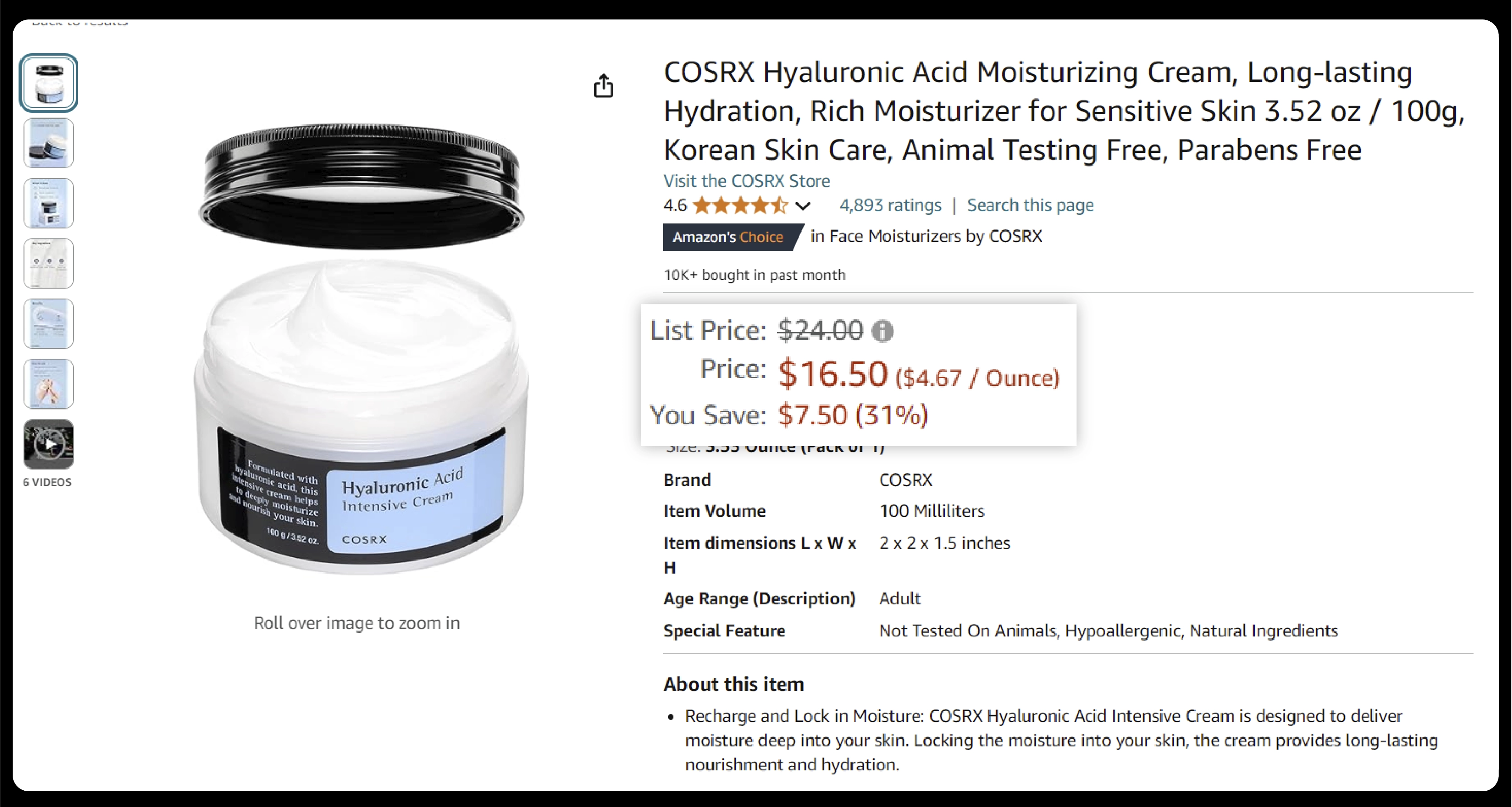
Bundle pricing, or price bundling, is a strategic approach where retailers combine multiple related products and offer them at a discounted, all-inclusive price. This strategy encourages customers to purchase more than one product at a time by grouping items together, increasing sales volume and overall profit. Bundle pricing can drive substantial revenue by promoting bulk purchases despite selling individual items at lower prices.
Retailers often use bundle pricing to simplify the shopping experience for customers, presenting a curated selection of products as a cohesive offering. This tactic enhances customer convenience and introduces unique SKUs to the retailer's catalog, which can lead to higher sales figures. The bundled products, often related or complementary, provide added value to consumers, making the overall deal more attractive.
This pricing strategy is particularly effective for brands and retailers dealing with low—to medium-value products across various industries. Businesses can scrape retail product data to optimize bundle pricing and identify the most effective combinations. By analyzing competitive pricing, product trends, and consumer preferences through data scraping, retailers can refine their bundle offerings and enhance their pricing strategies to maximize sales and profitability.
Dynamic pricing represents a cutting-edge approach that allows retailers to adjust prices in real time based on various factors such as consumer demand, market trends, and competitor pricing. This pricing strategy allows for the optimization of prices dynamically, considering historical data, current stock levels, and demand fluctuations. Initially popularized in industries like airlines and hospitality, dynamic pricing has become a vital tool in the eCommerce sector to meet the needs of comparison shoppers and navigate intense online competition. Major retail players, including Amazon, have successfully implemented this strategy to maintain their competitive edge.
By leveraging AI-driven pricing analytics, retailers can automate dynamic pricing and receive intelligent price recommendations that reflect multiple influencing factors. This advanced technology helps retailers stay ahead by continuously adjusting prices in response to changing market conditions and consumer behavior.
Businesses can scrape retail product price data to effectively implement dynamic pricing and gain valuable insights. This data collection technique allows retailers to track competitor prices, analyze market trends, and understand consumer purchasing patterns. By integrating these insights into their dynamic pricing models, retailers can enhance their pricing strategies, optimize revenue, and improve their overall market positioning.
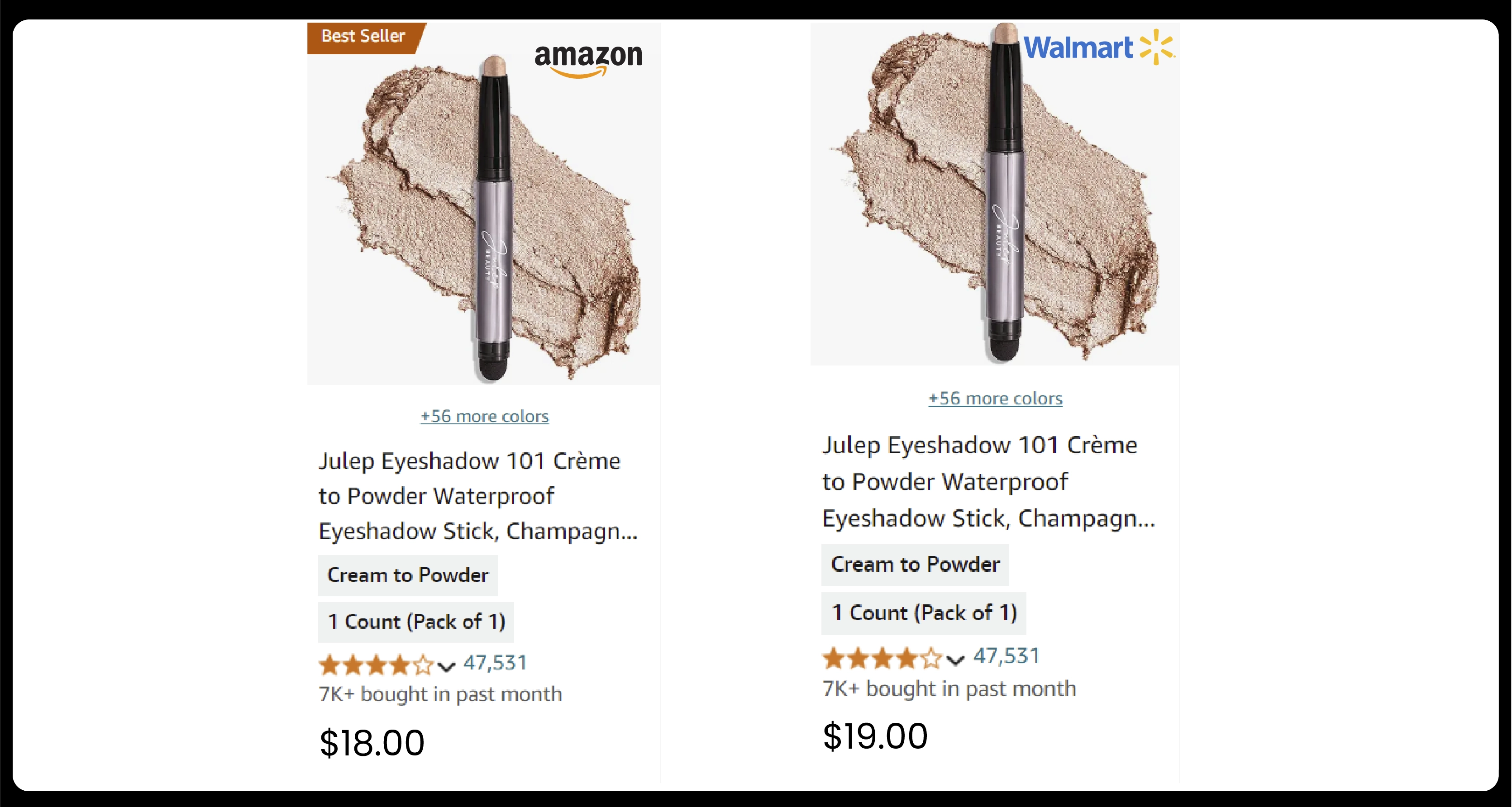
Competitive pricing is a strategy closely linked to dynamic pricing, where retailers adjust their prices based on the pricing movements of their competitors. This approach aims to capitalize on market opportunities by filling gaps left by competitors and ensuring that prices remain attractive to consumers. Retailers employ this strategy when their product prices reach equilibrium and seek to enhance their competitive edge.
To effectively implement competitive pricing, retailers must continuously monitor and analyze extensive competitor data. This involves comparing prices of similar products and understanding market dynamics to make informed pricing decisions. The strategy ensures that retailers can adjust their prices in real time, responding to changes in the competitive landscape and consumer preferences.
A prime example of competitive pricing in action is Walmart, which is known for consistently offering low prices. By closely tracking competitors' pricing strategies and adjusting its prices accordingly, Walmart maintains its position as a leader in the retail market.
To optimize competitive pricing, businesses can use data scraping tools to scrape retail product price data. This enables retailers to gather up-to-date competitor pricing information, market trends, and consumer behavior insights, allowing them to refine their pricing strategies and stay ahead in the competitive market.
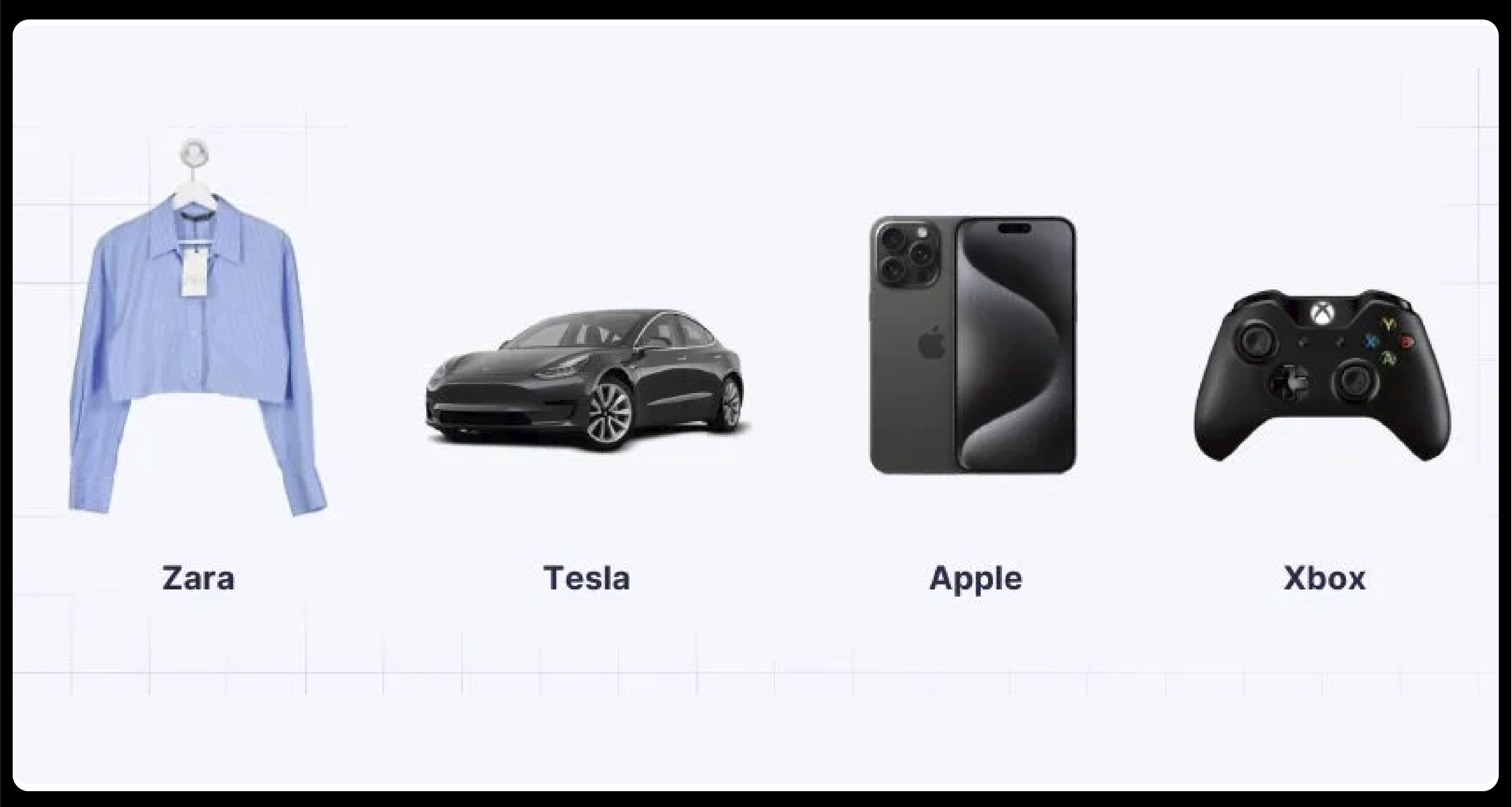
Skimming pricing is a strategy where retailers launch new products at the highest possible price, targeting consumers who are eager and able to pay a premium. This approach capitalizes on the strong demand from early adopters who prioritize having the latest offerings. Over time, as the initial excitement wanes and newer versions enter the market, prices are gradually lowered. This price reduction allows the product to appeal to a broader audience, including those initially priced out. The aim is to maximize profits at each stage of the product's life cycle, starting with high margins from early buyers and then expanding to a more extensive customer base as the product matures.
This pricing strategy is often used for electronics like smartphones, video game consoles, and smartwatches. In the context of consumer packaged goods (CPG), it could be applied to premium products such as organic or gourmet food items. These products might initially be priced high to attract a niche market of health-conscious or luxury-focused consumers. As the product gains popularity and the brand establishes itself, the price can be lowered to make it more accessible to a broader audience, thus broadening its market reach.

High-low pricing is a strategy where retailers initially set their product prices at a higher level and then offer discounts as the products become less relevant or new collections arrive. This approach is efficient for seasonal items or is released in multiple iterations yearly. The critical difference between high-low pricing and skimming pricing is that in high- low pricing, the price reductions occur gradually over time rather than starting high and dropping as new models enter the market.
This pricing strategy is well-suited for small and medium-sized businesses, especially in the fashion industry, where new collections are introduced each season. Fashion brands often use high-low pricing to capitalize on the initial demand for new arrivals, attracting customers willing to pay a premium for the latest trends. As the season progresses and the urgency to clear out inventory increases, retailers reduce prices to appeal to more price- sensitive shoppers and to make room for new stock.
Consumer packaged goods (CPG) companies can also leverage high-low pricing, especially for products with seasonal demand or those that benefit from promotional cycles. By strategically adjusting prices, they can maximize sales and maintain customer interest throughout the product's life cycle.
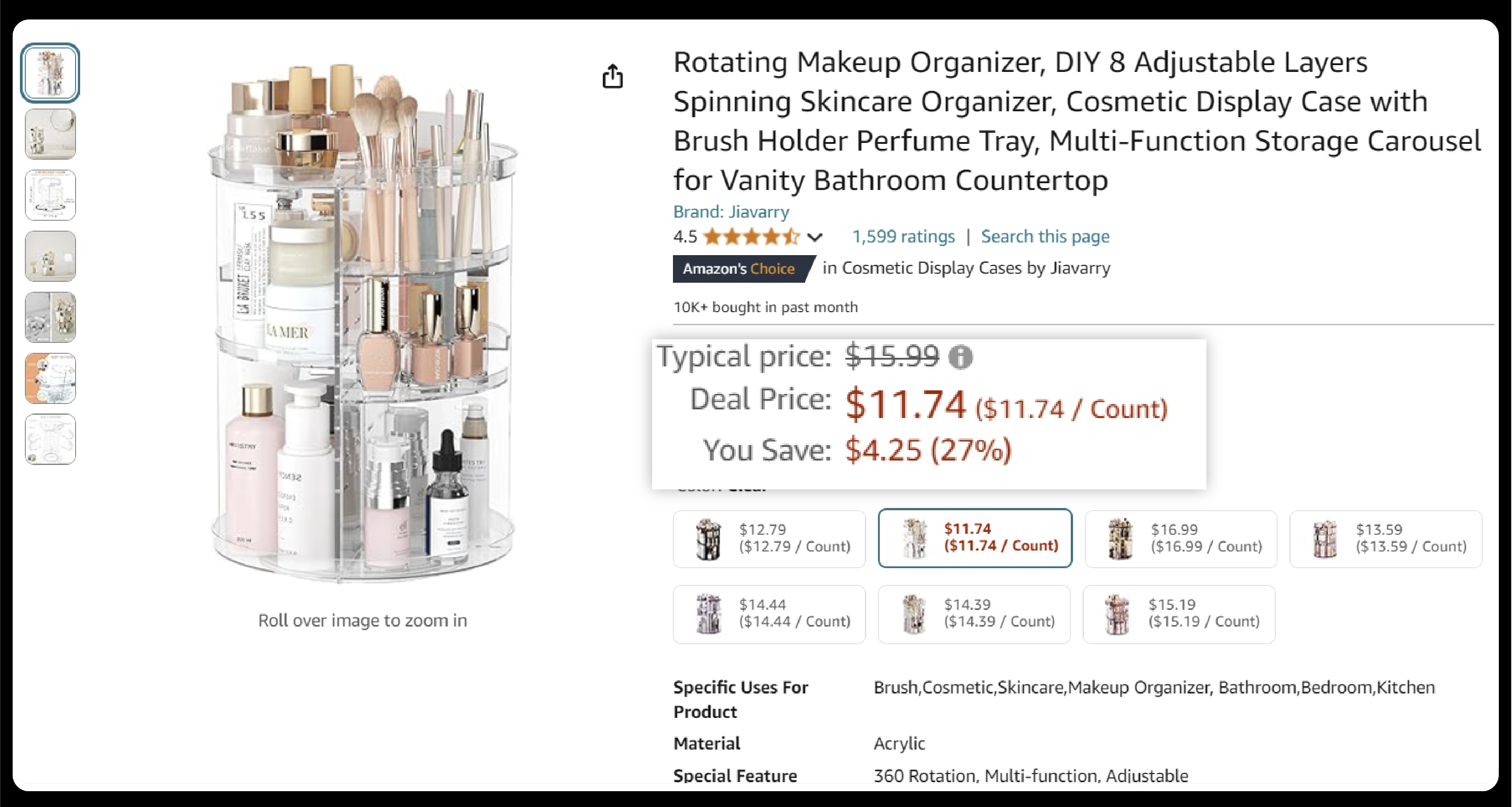
Subscription services have become increasingly popular, driven by the rise of eCommerce and consumers' desire for convenience. Nearly 35% of weekly online shoppers now use subscription services, and the global subscription eCommerce market is projected to reach $904.2 billion by 2026. This pricing model appeals to online shoppers who value the ease of automatic, recurring deliveries and prefer not to worry about repeat purchases.
Both new and established brands have successfully utilized subscription pricing to carve out a niche in the competitive online marketplace. By focusing on customer retention and offering ongoing value, these brands have managed to thrive, turning one-time buyers into repeat customers and building a sustainable business model in the fast-evolving eCommerce landscape.
Subscription pricing is ideal for frequently used items that require regular restocking, such as daily essentials, groceries, cleaning supplies, pet food, skincare products, and cosmetics. This model ensures convenience for consumers while providing businesses with a steady, predictable revenue stream and fostering long-term customer loyalty.
Conclusion: Mastering eCommerce pricing strategies is crucial for driving CPG growth in an increasingly competitive online marketplace. By scraping 11 eCommerce pricing strategies data to boost your CPG growth, businesses can gain valuable insights into competitor pricing, market trends, and consumer behavior. Leveraging these insights allows retailers to optimize pricing tactics, adapt to market dynamics, and enhance customer loyalty. Whether through dynamic pricing, subscription models, or psychological pricing, the strategic use of data ensures that CPG brands remain competitive, attract more customers, and ultimately drive sustained growth in the digital landscape.
Discover unparalleled web scraping service and mobile app scraping services offered by iWeb Data Scraping. Our expert team specializes in diverse data sets, including retail store locations data scraping and more. Reach out to us today to explore how we can tailor our services to meet your project requirements, ensuring optimal efficiency and reliability for your data needs.